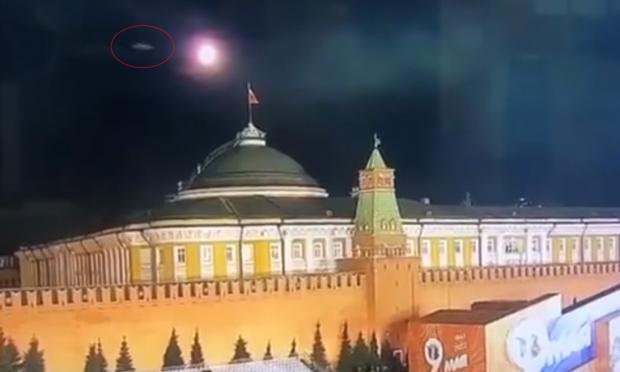Putin admitted today that Moscow's air defense system still needs work to deal with drone attacks like the one that hit the Russian capital.
In an article in Zvezda, the official organ of the Russian Defense Ministry, Putin said that "Moscow's air defense system worked normally, satisfactorily. Although there is something to work on," he admitted.
Putin admitted that similar difficulties in dealing with drones had been encountered at the Khmeimin air base, the Russian outpost in Syria, which has come under drone attack on several occasions. Putin also stated that, "It is understandable what needs to be done to strengthen the air defense of the capital and we will do it."
No specific details were given on what kind of measures could be taken to strengthen counter-drone capabilities in the Russian capital, although it is notable that the Pantsir air defense system has already begun to be deployed in the capital in recent months.
Of these air defense systems, reports from Russia claim that five of the drones were shot down by the Pantsir system, while three were reportedly defeated using unspecified "anti-drone electronics technology." Reports that Russia may have used electronic countermeasures to jam or disrupt GPS and/or GLONASS satellite signals in the greater Moscow area cannot be confirmed.
Other targets appear to have been located in one of the most affluent parts of the Russian capital, the Rublyovka district in the west, where Putin and other prominent Russian figures have homes.
An aide to Ukraine's president, Mykhailo Podolyak, denied any direct involvement by Kiev in the strikes in Moscow, but said "we are happy to watch." He also predicted that more such raids would follow.
This is not the first time that Ukrainian (or pro-Ukrainian) elements have launched drone strikes against Moscow.
In one incident earlier this month, a pair of drones targeted the Kremlin in what Russian authorities said was an assassination attempt on Putin, although that did not appear to be the case, at least based on where they ended up.
The attack on the Kremlin was met with a Russian promise of retaliation, although it remains to be seen how Russia will react to today's escalation.
There are also unconfirmed reports from Russia that the attack may have involved Ukrainian-made UJ-22 drones, which have been used in previous attacks on Russian soil. While the actual drones used remain unconfirmed, it is certain that a mixture was used, making the offense more difficult to defend against.
Likewise, we cannot say with certainty where the various drones were launched from, although those used appear to have consisted mainly of very long-range types intended to strike at long distances, meaning they could have been launched from inside the border of Ukraine.
More generally, there is a clear sense that attacks of this kind are getting closer and closer to the Russian capital. We have previously reported on other apparent attempts by Ukraine to strike close to Moscow. On April 24, an explosives-laden drone, likely a UJ-22, was found a short distance from Moscow.
While it remains to be seen (if any) what concrete action Russia will now take following this attack, it seems clear that Ukraine is steadily expanding its ability to threaten Moscow.
With Russian attacks on Kiev still continuing at a high pace, we are potentially on the brink of a new era of this conflict, in which Russia and Ukraine use drones to target each other's capitals, potentially striking the centers of power, as well as to make powerful symbolic statements and psychological implications.



